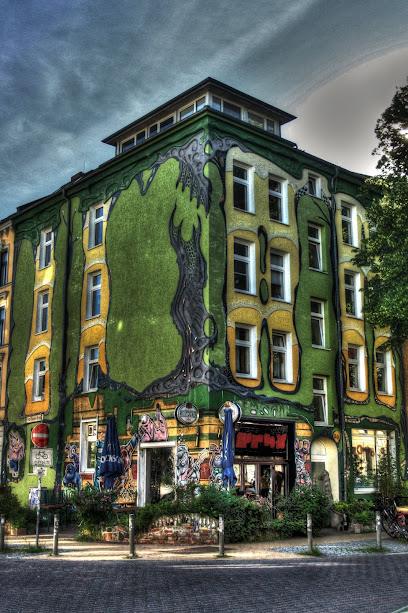
Exploring the Legacy of the Former Stasi Prison in Rostock
Experience the haunting history of the Stasi prison in Rostock, a museum dedicated to the memory of those who suffered under East Germany's secret police.
Discover the powerful history of the former Stasi prison in Rostock. This museum offers a haunting yet educational experience, shedding light on the oppressive tactics of the East German secret police. Visitors can explore the site at their own pace, making for a reflective journey through a significant part of Germany's past.
A brief summary to Dokumentations- und Gedenkstätte ehemalige Stasi-Untersuchungshaftanstalt Rostock
- Grüner Weg 5, Rostock, Mitte, 18055, DE
- +4915730285136
- Visit website
- Tuesday 10 am-3 pm
- Thursday 10 am-3 pm
Local tips
- Plan your visit on Tuesdays or Thursdays when the museum is open from 10 AM to 3 PM.
- Take your time exploring; the self-guided nature of the museum allows for a reflective experience.
- Check for any special exhibitions or guided tours that may be available during your visit.
- Photography may be restricted in certain areas; always check signage for guidance.
Getting There
-
Public Transport - Tram
If you are in the city center, head to the nearest tram stop, which is likely to be 'Rostock, Dierkower Kreuz' or 'Rostock, Universitätsplatz'. Take Tram Line 1 (direction: 'Rostock, Gehlsdorf') or Tram Line 5 (direction: 'Rostock, Warnemünde') and ride for about 10 minutes. Get off at the stop 'Rostock, Grünweg'. From the tram stop, walk south for about 300 meters along Grüner Weg until you reach the Dokumentations- und Gedenkstätte, which will be on your right.
-
Bus
From the city center, you can catch Bus Line 26 at the 'Rostock, Universitätsplatz' bus stop. Board the bus heading towards 'Rostock, Stadtmitte'. After approximately 15 minutes, get off at the 'Rostock, Grüner Weg' stop. Once you exit the bus, walk about 200 meters along Grüner Weg and you will arrive at the museum, located at Grüner Weg 5.
-
Walking
If you are staying near the Rostock city center or the main train station, you can walk to the museum. Head south on the 'Südstadtstraße' towards 'Am Bischof', then turn right onto 'Grüner Weg'. Continue straight for about 1.2 kilometers, and you will see the Dokumentations- und Gedenkstätte on your left at Grüner Weg 5. The walk will take approximately 15-20 minutes.
Discover more about Dokumentations- und Gedenkstätte ehemalige Stasi-Untersuchungshaftanstalt Rostock
Iconic landmarks you can’t miss
Die Trinkende
0.2 km
Explore the charm of Rostock at Die Trinkende, a historical fountain that offers a serene escape and cultural insights.
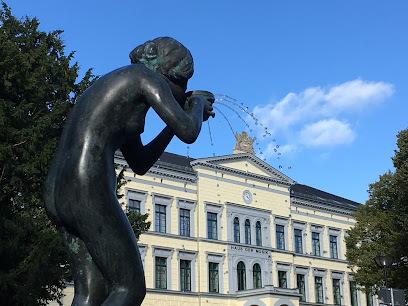
Kriegerdenkmal des Mecklenburgischen Füsilier-Regiments Nr. 90
0.2 km
Explore Rostock's rich history at the Kriegerdenkmal des Mecklenburgischen Fußilier-Regiments Nr. 90, a tribute to local soldiers and their sacrifices.
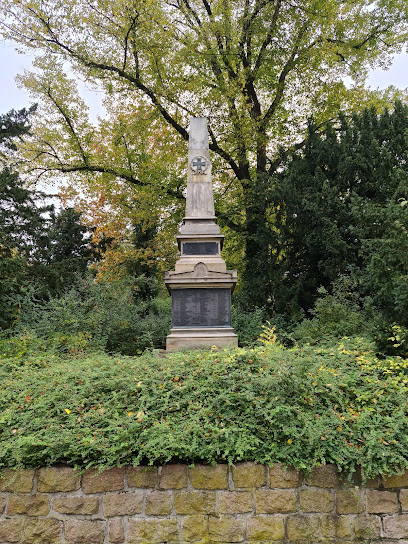
Rostock Bronze
0.6 km
Explore the stunning artistry of Rostock Bronze, a captivating tourist attraction showcasing historical bronze sculptures in the heart of Rostock, Germany.
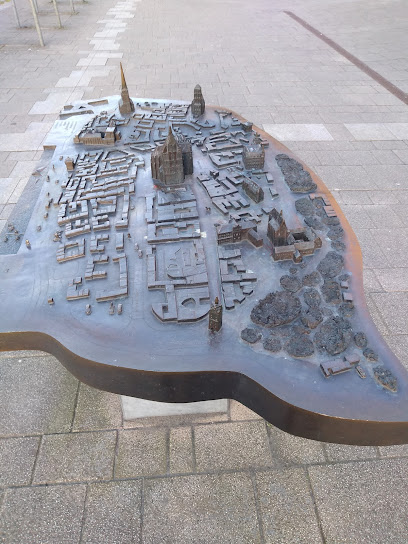
Hansestadt Rostock Denkmalpflegeamt
0.9 km
Explore the architectural beauty and historical richness of Hansestadt Rostock, a vibrant city where history meets modernity.

Wasserturm
1.0 km
Discover the Wasserturm in Rostock, a historical landmark that showcases the city's rich heritage and stunning architecture amidst charming surroundings.
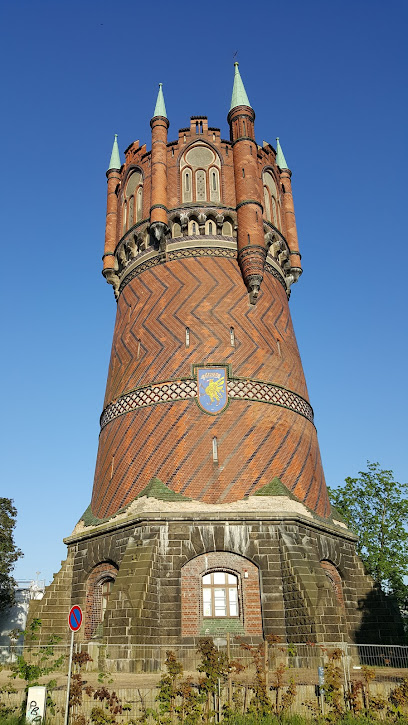
Lindenpark
1.0 km
Unwind in the beautiful Lindenpark, a quintessential state park in Rostock offering lush landscapes and serene walking paths for every tourist.
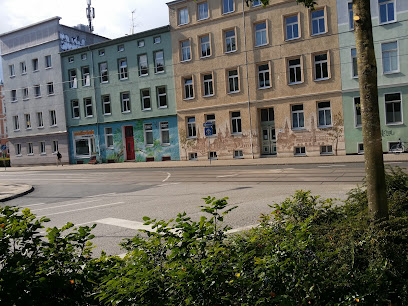
Alter Markt
1.0 km
Explore Alter Markt in Rostock, a historic square filled with architectural gems, local cuisine, and vibrant cultural events that bring the city's rich heritage to life.
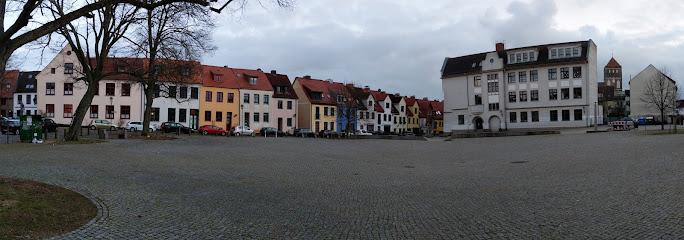
Baltic Sea Tourism Center
1.9 km
Explore the Baltic Sea with expert advice and resources from the Baltic Sea Tourism Center in Rostock, your ultimate travel guide to coastal adventures.

Darwineum Rostock
3.8 km
Discover the wonders of evolution and biodiversity at the Darwineum Rostock, a premier museum of zoology in Germany.

Warnemünde Church
10.7 km
Discover the historical beauty and serene atmosphere of Warnemünde Church, a must-visit landmark in Rostock's charming seaside district.
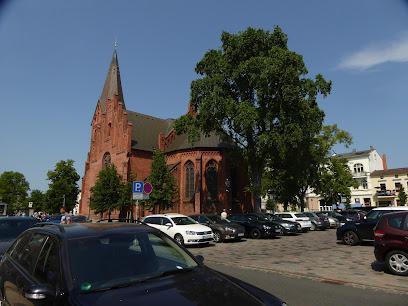
Kur Park
10.9 km
Discover the beauty and tranquility of Kur Park, a state park in Rostock perfect for serene walks, picnics, and enjoying nature's wonders.
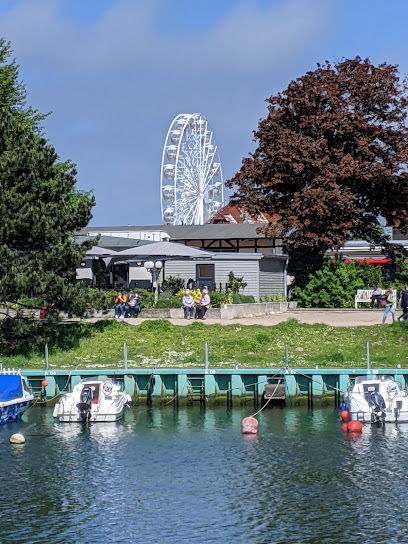
Warnemünde lighthouse
11.2 km
Discover the Warnemünde Lighthouse, a stunning historical landmark that offers breathtaking views of the Baltic Sea and the rich maritime history of Rostock.
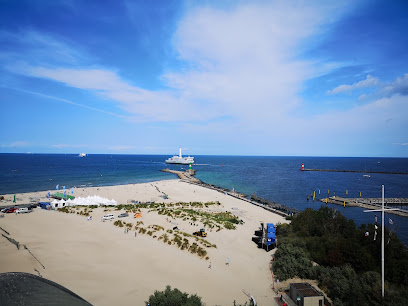
Stoltera Nature Reserve
12.3 km
Explore Stoltera Nature Reserve, a tranquil wildlife refuge in Rostock, where stunning landscapes meet rich biodiversity for nature lovers.
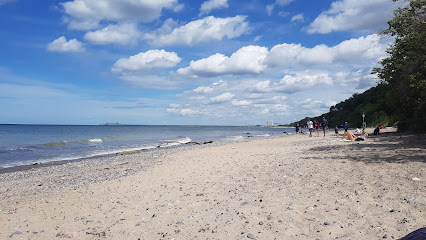
Beckerstein
12.6 km
Explore Beckerstein, a historical landmark in Rostock, offering an enriching experience steeped in culture and history.
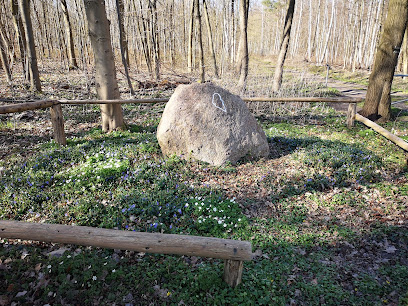
Rostock Heath
16.3 km
Discover the natural beauty of Rostock Heath, a serene national forest perfect for hiking, biking, and family picnics in the heart of Rostock, Germany.
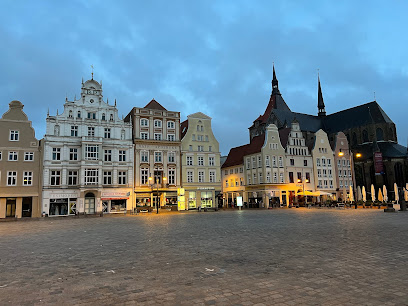
Unmissable attractions to see
Dokumentations- und Gedenkstätte ehemalige Stasi-Untersuchungshaftanstalt Rostock
0.0 km
Experience the haunting history of the Stasi prison in Rostock, a museum dedicated to the memory of those who suffered under East Germany's secret police.

Culture Museum Rostock
0.3 km
Explore the Culture Museum Rostock: A treasure trove of history, art, and culture in the heart of Germany's Baltic coast.
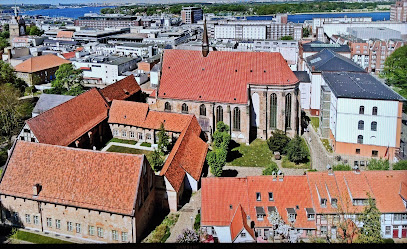
Monastery of the Holy Cross
0.3 km
Experience the serene beauty and historical significance of the Monastery of the Holy Cross in Rostock, a tranquil retreat steeped in spirituality and culture.
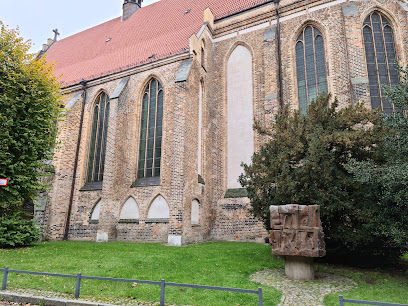
Universität Rostock
0.4 km
Explore the rich heritage and academic spirit of Universität Rostock, one of Germany's oldest universities, in the heart of Rostock.
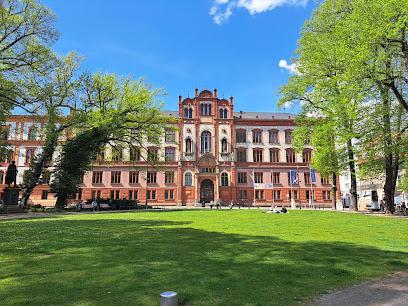
Brunnen der Lebensfreude
0.4 km
Discover the joy of Rostock at Brunnen der Lebensfreude, a beautiful fountain surrounded by gardens, art, and local history, perfect for every traveler.

Rostocker Panorama Rahmen
0.4 km
Explore the Rostocker Panorama Rahmen, a vibrant tourist attraction showcasing Rostock's maritime history and cultural evolution through stunning panoramas.
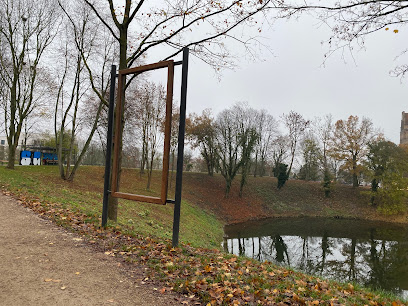
Glockenspiel im Fünfgiebelhaus
0.4 km
Discover the captivating Glockenspiel im Fünfgiebelhaus in Rostock's charming Nördliche Altstadt, a mesmerizing blend of history, culture, and architectural beauty.
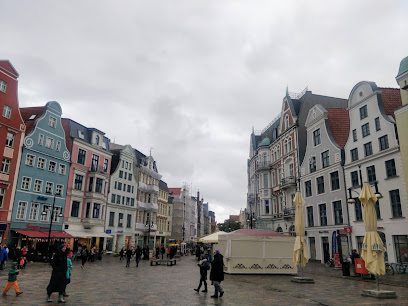
Rostock Altstadt
0.4 km
Explore Rostock Altstadt, a historical landmark rich in medieval architecture and vibrant culture, perfect for a delightful travel experience.
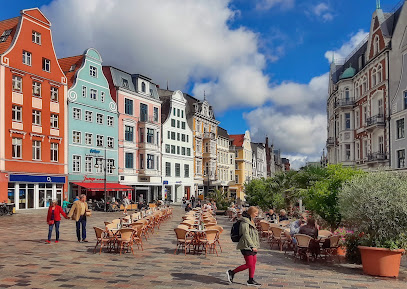
Ständehaus Rostock
0.4 km
Discover the architectural splendor and historical importance of Ständehaus Rostock, a must-see landmark in the heart of the city.
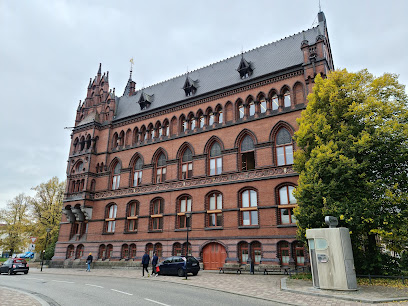
Steintor
0.5 km
Explore the historical allure of Steintor in Rostock, a stunning medieval gate that showcases the city's rich cultural heritage and architectural beauty.
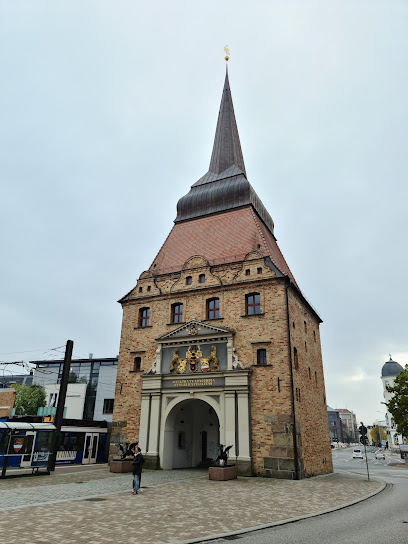
Kröpeliner Tor
0.5 km
Explore the majestic Kröpeliner Tor, Rostock's historic city gate, and immerse yourself in the rich heritage of this charming German city.
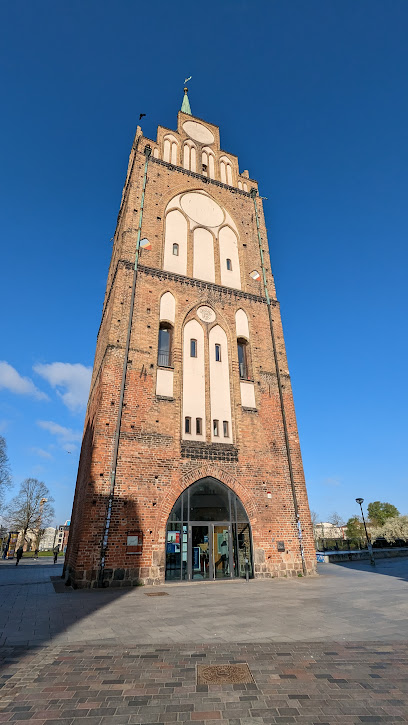
Drei Schilfstangen
0.5 km
Discover Drei Schilfstangen, a charming playground in Rostock where families can unwind and children can play in a peaceful, engaging environment.

Stiftung St.-Marien-Kirche zu Rostock e.V.
0.5 km
Explore St. Marien Church in Rostock: A Gothic architectural masterpiece and cultural hub with stunning stained glass and rich history.
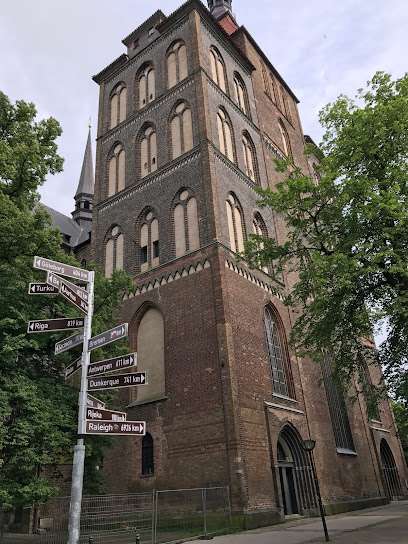
St. Marien - Ev.-Luth. Innenstadtgemeinde Rostock
0.5 km
Experience the majestic St. Marien Church in Rostock, a historical Protestant church with stunning architecture and rich cultural heritage.
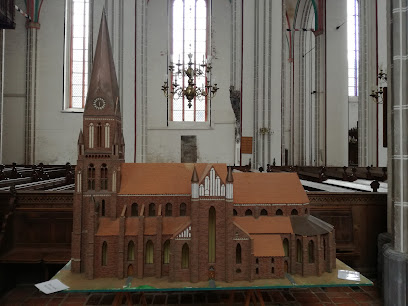
Brunnen am Ziegenmarkt
0.6 km
Explore the charming Brunnen am Ziegenmarkt, a historical fountain in Rostock surrounded by lively streets and rich culture, perfect for tourists and locals alike.

Essential places to dine
Restaurant Hopfenkeller
0.4 km
Experience authentic German cuisine at Restaurant Hopfenkeller in Rostock – where tradition meets taste.
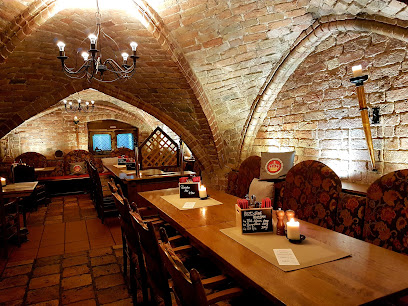
BLOCK HOUSE Rostock
0.4 km
Experience top-quality steaks at BLOCK HOUSE Rostock - where flavor meets hospitality in a cozy atmosphere.

BLAUER ESEL - Lunch, Gourmet Dinner & Catering
0.5 km
Discover the taste of Germany at Blauer Esel - where tradition meets innovation in a cozy dining experience.
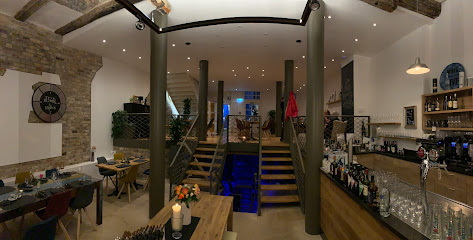
Kane's African Soul Rostock
0.5 km
Experience authentic African cuisine at Kane's African Soul in Rostock; indulge in flavorful dishes from hearty meats to vibrant vegan delights.

VAPIANO Rostock
0.5 km
Discover authentic Italian cuisine at VAPIANO Rostock, where fresh ingredients meet modern dining in a vibrant atmosphere.
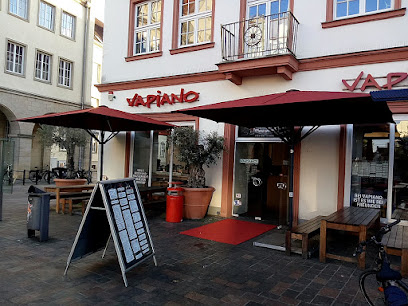
L'Osteria Rostock
0.6 km
Experience the true flavors of Italy at L'Osteria Rostock - where pizza meets passion in a lively atmosphere.
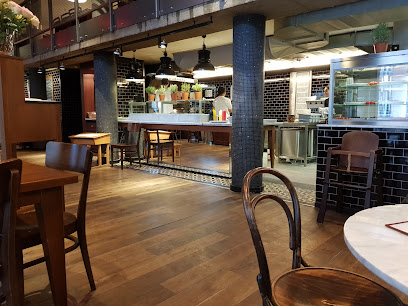
Restaurant im Vienna House by Wyndham Sonne Rostock
0.6 km
Experience exquisite German-Mediterranean cuisine at Restaurant im Vienna House in Rostock—where culinary traditions meet modern flair.
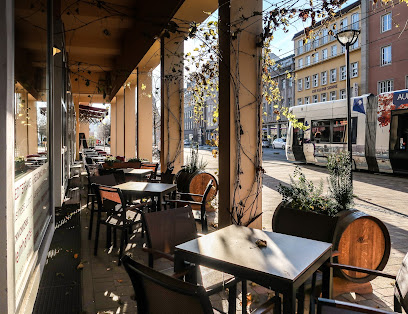
Burwitz Legendär Rostock
0.6 km
Experience the flavors of Rostock at Burwitz Legendär - where every meal is a celebration of local culinary art.
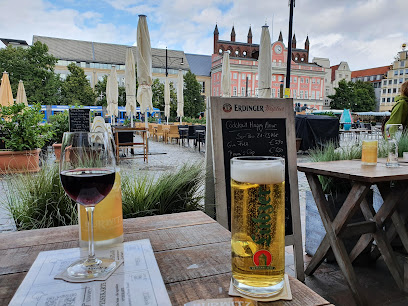
Old Western
0.6 km
Savor hearty American cuisine amidst rustic Wild West charm at Old Western in Rostock – a unique dining adventure awaits!
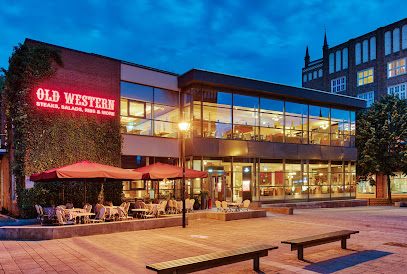
ALEX Rostock
0.6 km
Discover ALEX Rostock: where delightful dining meets vibrant atmosphere in the heart of the city.
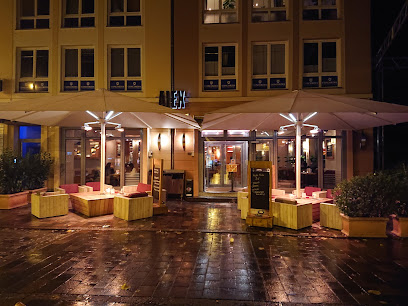
Helgas Kitchen - Rostock
0.6 km
Experience delightful German cuisine at Helgas Kitchen in Rostock - where tradition meets innovation in every bite.

KAI40 Restaurant & Bar - Rostock
0.6 km
Experience modern cuisine in Rostock at KAI40 Restaurant & Bar – where local flavors meet international flair.

Ratskeller12 - Restaurant
0.6 km
Experience authentic German cuisine at Ratskeller12 in Rostock's vibrant atmosphere with delightful dishes and refreshing local brews.
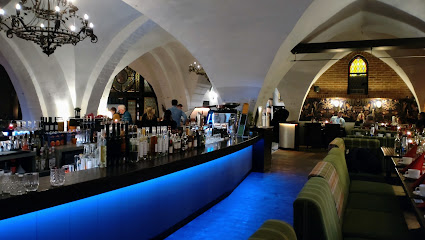
Grüne Kombüse
0.8 km
Discover delicious vegan delights at Grüne Kombüse in Rostock – where sustainability meets flavorful dining experiences.
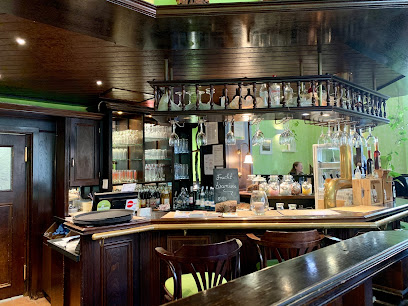
Zur Kogge
0.8 km
Experience authentic German cuisine at Zur Kogge in Rostock—where tradition meets flavor in a charming setting.
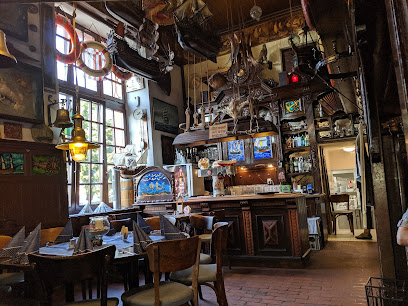
Markets, malls and hidden boutiques
The Body Shop
0.4 km
Discover eco-friendly beauty at The Body Shop in Rostock, where ethical cosmetics meet unique gifts in a vibrant shopping atmosphere.

Galerie Rostocker Hof
0.4 km
Explore the vibrant Galerie Rostocker Hof, a shopping haven in Rostock with diverse stores, delicious dining, and a lively atmosphere for every visitor.

Green Harbour
0.4 km
Explore Green Harbour in Rostock for unique novelties, stylish shoes, and health supplements in a vibrant shopping atmosphere.

NANU-NANA
0.4 km
Explore NANU-NANA in Rostock for unique gifts, crafts, and home goods that capture the charm of your visit, making it a must-stop destination.

Riccardo E-Zigaretten Store
0.4 km
Explore the premier vaporizer store in Rostock, offering a diverse range of e-cigarettes and accessories for every vaping enthusiast.

G-Star RAW
0.5 km
Discover the trendy world of G-Star RAW in Rostock, where high-quality denim meets stylish accessories for a complete fashion experience.

Kröpeliner Tor Center Rostock
0.5 km
Explore the Kröpeliner Tor Center in Rostock for an unbeatable shopping experience, featuring top brands, local boutiques, and delicious dining options.

GALERIA Rostock
0.5 km
Discover a shopper's paradise at GALERIA Rostock, where fashion, home goods, and unique souvenirs come together in a vibrant atmosphere.

Rosenrot Rostock
0.6 km
Discover unique gifts and local treasures at Rosenrot Rostock – the perfect stop for souvenirs, fashion accessories, and wedding services.

Kreativ Fritz Inh. Theresa Fritz
0.7 km
Explore Kreativ Fritz, a vibrant gift shop in Rostock, offering unique crafts and stationery that capture the essence of local artistry.

HERZallerliebste...von anderer ART
0.7 km
Explore the charm of Rostock at 'HERZallerliebste...von anderer ART', your go-to destination for unique handcrafted gifts and local treasures.
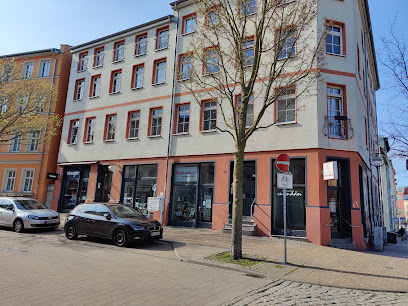
Doberaner Hof
0.7 km
Explore Doberaner Hof in Rostock: A vibrant shopping mall offering unique local and international retail experiences.

Wunscherfüller
0.8 km
Explore Wunscherfüller in Rostock for unique gifts and local crafts, capturing the spirit of your travels with every purchase.
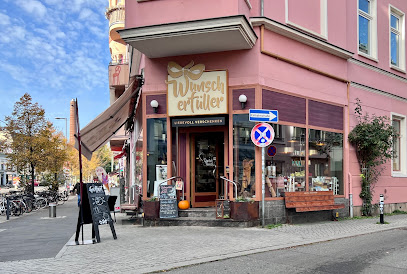
FREIRAUM Wohnbagatellen
1.0 km
Explore FREIRAUM Wohnbagatellen in Rostock for unique gifts and local treasures that capture the essence of your travels.
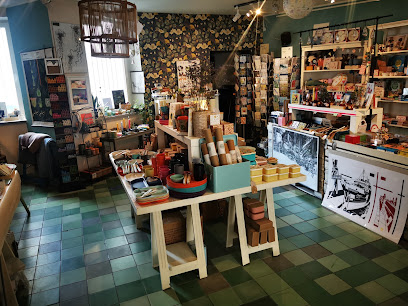
MyVint - Vintage Streetwear Store
1.2 km
Explore the vibrant world of vintage streetwear at MyVint in Rostock, where every piece tells a story and fashion meets individuality.

Essential bars & hidden hideouts
Déjà Vu - Rostock
0.5 km
Discover the vibrant atmosphere of Déjà Vu in Rostock, where exquisite cocktails, delicious hamburgers, and a lively dance scene await.

Rooftop Bar - KAI40
0.6 km
Experience the vibrant nightlife and breathtaking views at KAI40 Rooftop Bar, Rostock's premier destination for cocktails and socializing.

Empire - Rostock
0.7 km
Experience Rostock's nightlife at Empire Pub, where lively atmosphere meets delicious drinks and local flavors for an unforgettable night out.
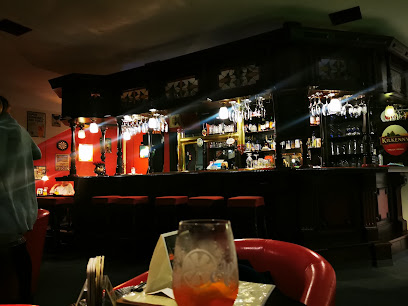
Likörfabrik
0.7 km
Experience the culinary delights of Rostock at Likörfabrik, where delicious breakfasts, cocktails, and coffee come together in a charming atmosphere.
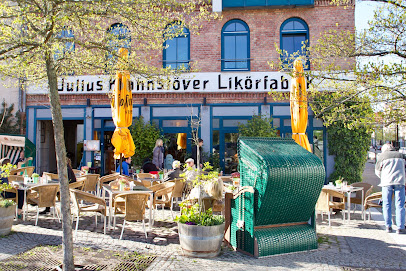
b sieben
0.7 km
Experience the charm of B sieben in Rostock, where great drinks, delicious food, and a cozy atmosphere come together.

Crocodil - Die Raucherkneipe
0.8 km
Discover the local pub culture at Crocodil - Die Raucherkneipe, a cozy spot in Rostock offering affordable drinks and a welcoming atmosphere.
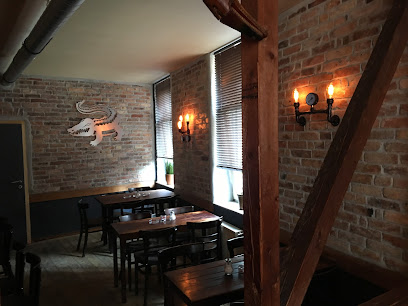
BARke Das Cocktailboot
0.8 km
Discover the enchanting BARke Das Cocktailboot in Rostock, where exquisite cocktails and picturesque views create an unforgettable experience.
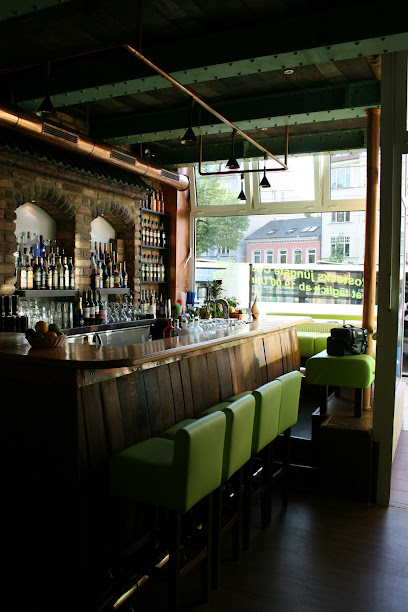
Pub Carolina - Rostock
0.9 km
Discover the heart of Rostock's nightlife at Pub Carolina, where great drinks and vibrant atmosphere await you.

Farellis
0.9 km
Discover Farellis in Rostock, a stylish bar offering exquisite cocktails and a vibrant atmosphere for an unforgettable night out.

Planbar - Rostock
1.0 km
Experience the lively atmosphere of Planbar in Rostock, a vibrant gay karaoke bar and pub perfect for an unforgettable night out with friends.

ROST-DOCK
1.0 km
Discover the lively atmosphere of ROST-DOCK, a riverside bar in Rostock offering stunning views and a vibrant drink menu for tourists.
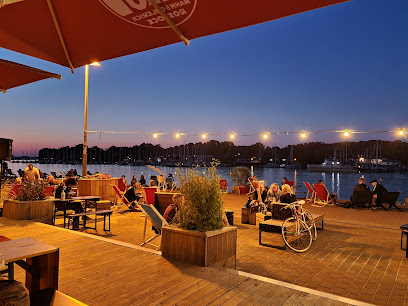
Hafenbar Pier 615
1.3 km
Experience stunning waterfront views and a vibrant atmosphere at Hafenbar Pier 615 in Rostock, where affordable drinks and good company await.

Craftbar Rostock
1.3 km
Discover the art of mixology at Craftbar Rostock, a vibrant cocktail bar offering unique drinks and an inviting atmosphere in the heart of the city.

La Havanna Bar - Longdrinks - Cocktails - Cigars - Smokers Lounge
1.3 km
Discover the vibrant La Havanna Bar in Rostock, where exquisite cocktails and fine cigars create an unforgettable nightlife experience.
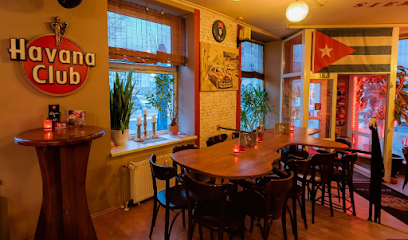
Molotow - Rostock
1.4 km
Experience the vibrant nightlife of Rostock at Molotow, where delicious cuisine and lively entertainment come together in a welcoming pub atmosphere.
